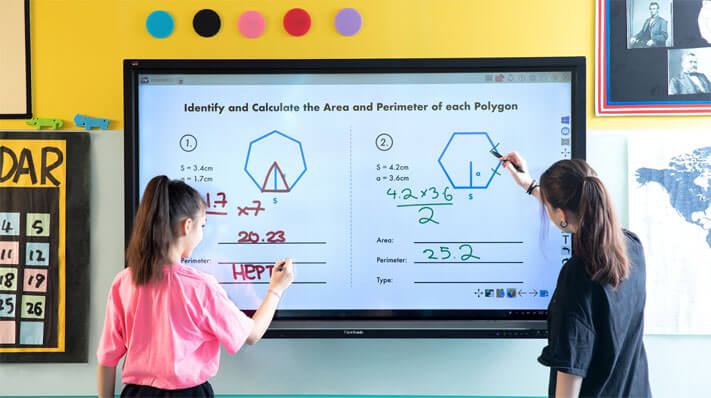Smart education is a key ingredient in smart city development. Strengths in basic education, advanced training and certification, universities and community colleges, e-learning infrastructure, lifelong learning and innovation in education technologies are all part of what defines a smart city. "For the citizens of a smart city to thrive, we must first place education at its centre," according to Dr. I-Chang Tsai, Vice President and Director General of Digital Education at the Institute for Information Industry in Taiwan. "Smart cities recognize the need for education programs producing graduates with modern knowledge, practical skills and collaborative attitudes."
In the previous century, various technologies were introduced in education, but not all technologies were successful in the classroom. They were often teacher-centric tools designed to work in conjunction with traditional teaching methods which were not engaging to new generations of students moving rapidly up the digital adoption curve. Nowadays, the development of a smart education ecosystem involves smarter deployment of digital technologies. To achieve more effective use of classroom technologies, educators can turn to innovations centred on student and teacher-student collaboration.
In this article, we present a perspective on smart education—and focus on ViewSonic, an education technology firm with an innovative approach to interactive learning.
Smart Education: What Is It?
Smart education is a model of learning adapted to new generations of digital natives. In comparison to traditional classroom teaching models, smart education is an interactive, collaborative and visual model, designed to increase student engagement and enable teachers to adapt to students' skills, interests and learning preferences.
In the past, "what students could see, hear and feel was bounded by the walls of the classroom," says Professor Byeong Guk Ku, a teacher in South Korea and smart education pioneer who designed an interactive learning model with social networking and cloud-based capabilities. Professor Ku believes "one of the greatest opportunities offered by innovation in education is that students can relate to the real world thanks to new technologies."
Unfortunately, the adoption and effectiveness of educational technologies lagged behind other societal trends such as consumers' rapid acceptance of digital products and services. Now, the "increasingly digital and tech-centric behaviours of students, teachers, and parents are expanding the way learning occurs."
As you might expect, newer teachers—in particular those who are digital natives—are firm believers in the educational value of technology in the classroom. Based on a Deloitte survey on digital education, more than 80% of those with ten or fewer years of teaching experience "believe educational technology at school makes a 'really big' or 'pretty big positive difference' on students’ learning."
Sean Arnold—a special educator, STEM coach and teacher in New York City’s District 75 special needs program—says "Many students need to connect to content differently for it to be meaningful." Arnold explains that teachers need to present information in new ways "to appeal to visual, auditory, kinesthetic and tactile learners.
Smart Education and Classroom Challenges
"Existing classroom technology in schools and other educational facilities is often outdated and does not offer the functionality that modern digital and media-rich education should encompass to increase student engagement and learning outcomes." Smart cities need education facilities and school systems which ensure students acquire 21st-century skills, including "digital literacy, inventive thinking, effective communication, teamwork and the ability to create high-quality projects. To reach this lofty goal, educators need to focus technology on the key building blocks of student achievement." A report from the U.S. Department of Education indicates that "a digital use divide continues to exist between learners who use technology in active, creative ways to support their learning and those who predominantly use technology for passive content consumption."
"Despite everyday use, there is room for growth in school technology adoption: 40% of teachers say their school is 'behind the curve' when it comes to technology adoption and implementation." An advantage of smart education is that it should enable teachers to meet the needs of students with specific modes of learning, such as those who are mostly visual learners. "Studies show visual learners make up about 65% of the population and 90% of information is transmitted visually. It’s important to teach to students’ strengths, especially when the content may not be inherently memorable or engaging."
"Smart classroom technology supports the professionalization of the teaching process, supporting teachers to better prepare and enrich their lectures and to react flexibly to the needs of students and conditions in classrooms, leading to increased efficiency and better teaching performance." In this student-centric context, the teacher is no longer an authoritarian figure, but a guide, a learning companion, in what is effectively a bi-directional process.
ViewSonic: Next-Generation Solutions for Smart Education
ViewSonic Corp., a leader in interactive display technologies, offers a wide range of innovative display solutions for next-generation teaching and learning. ViewSonic's award-winning education solutions "transform classrooms into immersive learning environments" and enable teachers and students to connect and collaborate.
ViewSonic believes "interactive learning is an all-encompassing approach to education. By emphasizing student engagement with new material, interactive class structures are more holistic. Classes that embrace interactive learning are less about regurgitating information and more about discussions, critical thinking, and open-ended questioning.[…] Interactive learning, complete with student-to-student interactions and hands-on lessons may result in a 60% uptick in student engagement."
The company's interactive learning solutions include:
- ViewBoard® Interactive Flat Panel Displays—Award-winning interactive displays (65- and 75-inch) with responsive multi-touch interactivity for powerful out-of-the-box classroom collaborations
- MyViewBoard Interactive Annotation Software—A digital whiteboard in the cloud enabling teachers to connect with students through a user-friendly design for casting, sharing, and annotation. With the ViewBoard, teachers can plan lessons, seamlessly import multimedia files and easily save to the cloud.
ViewSonic claims that schools which deploy interactive ViewBoards and MyViewBoard software in classrooms will enrich the teaching and learning experience through increased student engagement and motivation, peer-to-peer collaboration between students and teachers, instant polling, game-based activities, and content-sharing software.
At the 2018 Future of Education Technology Conference (FETC), Sarah Kearns, commercial marketing director at ViewSonic Americas, said “ViewSonic education solutions drive engagement that energizes and motivates students and makes teaching, and learning, more fun. […] From interactive learning and esports programs to wayfinding and digital signage all around a campus, ViewSonic offers future-proof display solutions that meet a school’s changing needs."
Get more information on ViewSonic smart education solutions:
This blog post is a sponsored article by ViewSonic Technology GmbH.


